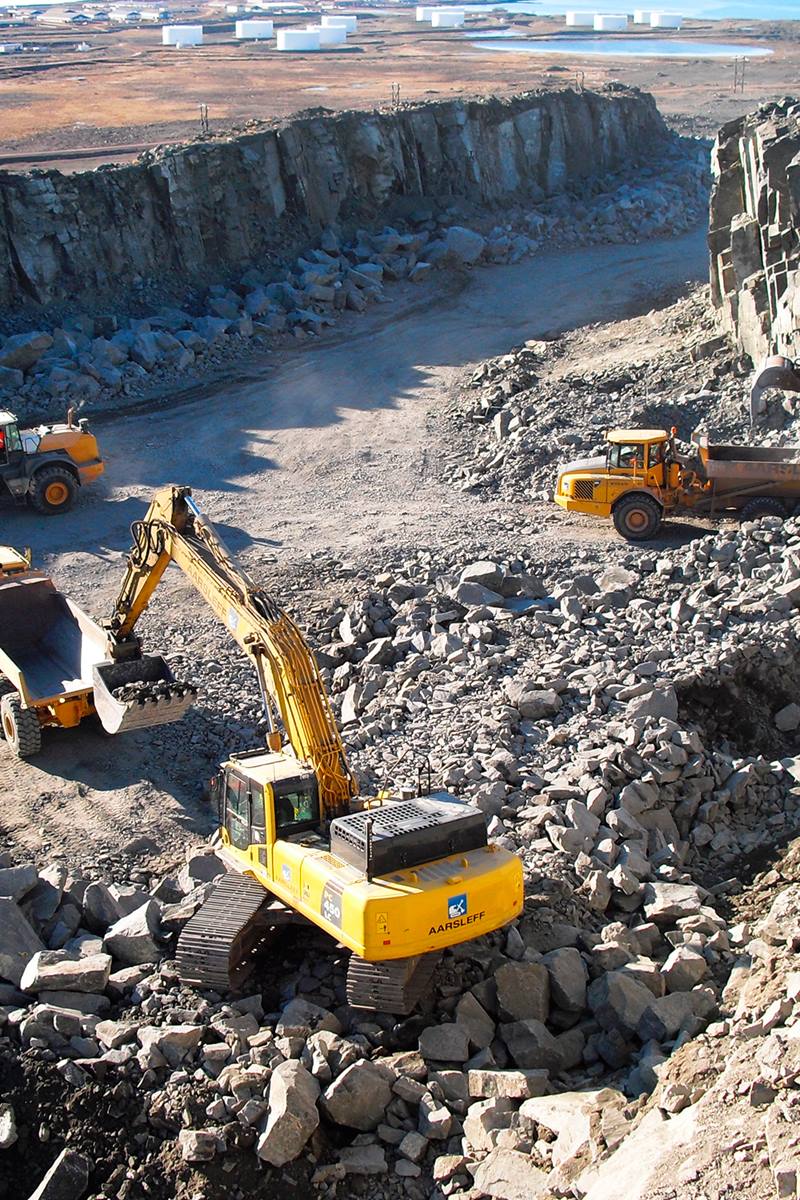Shaft Mining

Shaft mining or shaft sinking refers to the method of excavating a vertical or near-vertical tunnel from the top down, where there is initially no access to the bottom.
Pros:- produces very little waste and mill tailings
easier permiting and grade control
less damaging to environment
Cons:- high cost per ton of ore
ventilation
more hazardous to workers
Pros:- produces very little waste and mill tailings
easier permiting and grade control
less damaging to environment
Cons:- high cost per ton of ore
ventilation
more hazardous to workers
Strip Mining
Strip mining, or open-pit mining is a surface mining technique of extracting rock or minerals from the earth by their removal from an open pit or borrow. This form of mining differs from extractive methods that require tunneling into the earth, such as long wall mining.
Pros:- Easier access to materials
Easier to transport materials to the destination
Less hazards in regards to mining in tunnels or underground
Cons:- Alot more disel fuel burned to transport goods
Blasting is also required making it highly dangerous to anyone around and the atmosphere
AMD, or acid mine drainage, is a serious environmental concern associated with strip mining.
Part B
» Spouse of a miner would prefer strip mining a lot more because it is a lot safer and she wants her husband to be safe at work.
» Owner of a mining company would prefer shaft mining because he would want his employees to be safe and it costs a lot less to create.
» Environmentalist would prefer shaft mining because it doesn't do as much damage to the environment.
» Owner of nearby ski resorts would prefer shaft mining because you wouldn't be looking at a gaping hole coming down the mountain and there's less chance of deadly chemicals coming out into the atmosphere.
» Politician would prefer strip mining because it is a lot cheaper and get more profit.
Part C
Diatomite was a leading export commodity in 2002, and ferrosilicon production and geothermal power were Iceland's major mineral industries. Diatomite production, from Lake Myvatn, was 28,000 tons in 2001, and the Ministry of Environment issued a permit for dredging in a new area of the lake, as government studies determined that additional mining would not damage the environmentally sensitive lake. Iceland also produced hydraulic cement, nitrogen, pumice, salt, scoria, sand (basaltic, calcareous, and shell), sand and gravel, and crushed stone (basaltic and rhyolite); these minerals were used by local industries. Among Iceland's other mineral resources, spar and sulfur deposits, once mined, were no longer worked extensively; peat was common, but little used; and sulfur and lignite were being processed experimentally, the former with the use of subterranean steam. The country's aluminum plant and ferrosilicon plant relied on imported raw materials and inexpensive hydroelectric and geothermal energy.


No comments:
Post a Comment